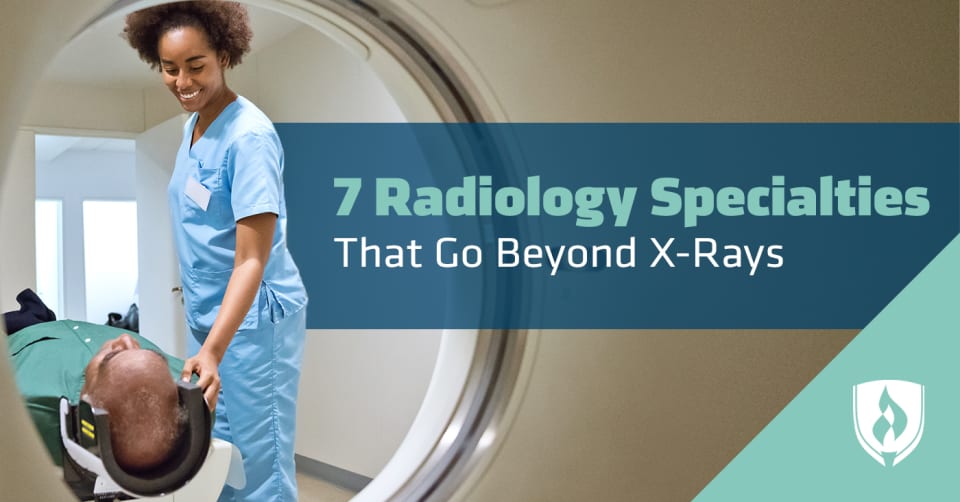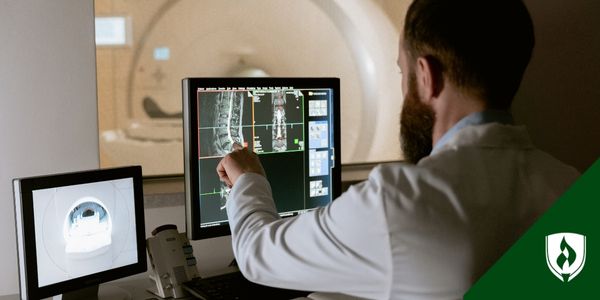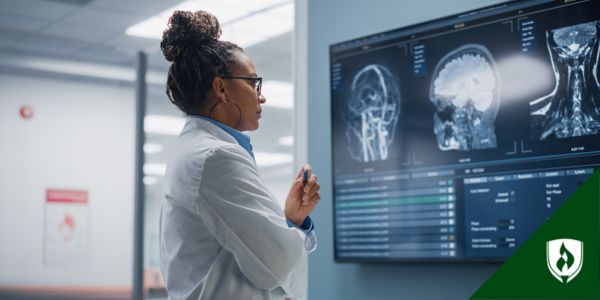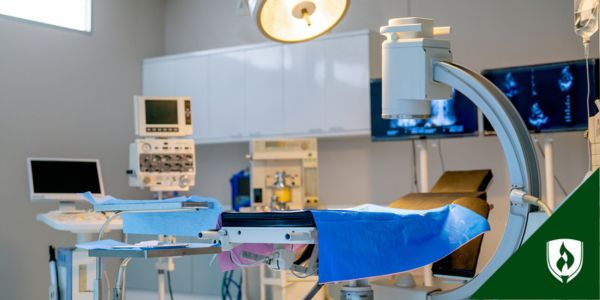
X-ray vision might not be the most popular choice of preferred superpower—moving at the speed of light and incredible strength are hard to pass up, after all. While those abilities might be fun to daydream about, there’s an entire professional field dedicated to peering into a world unseen by most, using their “X-ray vision” of sorts to get a clearer picture of the inner workings of the human body. Radiology specialists explore everything from how the brain circulates blood to the presence of cancerous tumors. These professionals are low-key superheroes in the healthcare field, providing vision and diagnostic clarity to some of the most vexing medical issues.
Better yet, a career in radiology doesn’t necessarily mean you’ll need to go through the long process of attending medical school and becoming a radiologist. Radiologic technologists and other radiology-related technical specialists have a shorter path into the field—and a wide variety of specialties to pursue as their careers progress. In this article, we’ll take a closer look at common radiology and diagnostic imaging specialties you may encounter in this field.
7 Lesser-known radiology specialties
Though requirements will vary from state to state, you will likely need to become certified in each of these specialties after obtaining your core education and training. The American Registry of Radiologic Technologists (ARRT) offers a variety of certifications and is a great resource for exploring these specialties further.
1. Mammography
Radiologic technologists who specialize in mammography work in both hospitals and clinics to help diagnose diseases of the breast with radiation imagery. Mammography is a specific type of diagnostic imaging that uses low-dose X-rays to detect cancer. This imaging can identify cancer cells even before a patient has noticed symptoms, making it much easier to treat.
2. Sonography
Sonographers employ ultrasound machines that use high-frequency sound waves. These sound waves generate images that help physicians diagnose and treat various medical conditions. While sonography is often associated with OBGYNs, sonographers work in a variety of fields with many different patients in both hospital and clinical settings.
For example, abdominal sonographers image organs in the abdominal area. Musculoskeletal sonographers deal with muscles, ligaments, tendons and joints, and pediatric sonographers work specifically in diagnostic imaging for children.
3. Nuclear medicine
A continually growing specialty in the field of radiology is nuclear medicine, which involves administering radioactive drugs to patients for positron emission tomography (PET) scans. These low-level radiation doses work as a sort of “tracer” within a patient—the gamma rays emitted provide a detailed look at where blood is flowing and can identify problem areas like tumors that may not be detectable through other forms of diagnostic imaging. These scans are most often used to diagnose conditions in the brain or heart. The ability to perform many mathematical formulations is an important part of this specialty.
4. MRI technology
MRI techs operate magnetic resonance imaging (MRI) machines to create diagnostic images for healthcare professionals. Most of these professionals work in hospital settings, while some work in medical labs or outpatient care centers. The images they produce help to diagnose issues in the brain, musculoskeletal problems, sports injuries, spinal conditions and more.
5. Bone densitometry
Bone densitometry specialists use dual-energy x-ray absorptiometry (DXA) scans to help patients deal with issues of bone loss that can lead to osteoporosis, a problem most often ailing older generations of women. Routine bone density tests are recommended for all women 65 and older, so bone densitometry will likely remain an in-demand radiology specialty.
6. Computed tomography (CT)
Also known as a CAT scan, this procedure creates three-dimensional images of internal organs, bones, soft tissue and blood vessels. CT technicians must administer patients with a chemical contrast that highlights the system in question. You’ll have to be comfortable with needles and patient interaction as IVs and enemas are common forms of administration.
CT scans can be found in clinics or emergency facilities, so you’ll have your choice of a critical environment or a more procedural one. This test is often administered to those with cancer or are suspected of cancer, so if this is something you’re passionate about, computed tomography could be the specialty for you.
7. Fluoroscopy
This procedure is the action film of X-rays. Okay maybe that’s overselling it, but fluoroscopic imaging captures real-time images of contrast moving throughout the body—as opposed to a still X-ray image. If a patient is having trouble swallowing, a fluoroscopy can record just how fluid moves through their throat from the inside. This can help identify issues otherwise unnoticeable in still images.
Fluoroscopy can also document blood flow which can be useful for a variety of treatments or procedures including the placement of heart stents. You won’t win an Oscar for this film, but if you’re interested in how the body works in action, this is an exciting twist to traditional X-rays.
Picture your future
Has the world of radiology and diagnostic imaging captured your attention? These medical professionals provide a perspective into the inner workings of a human body with technology that would be absolutely mind-blowing a century ago. While the paths to working in these radiology specialties can vary, one excellent option for a starting point is to become a radiologic technologist. Get a clearer path of the road ahead in our article, “How to Become a Radiologic Technologist: Examining Your Path.”
Related Articles:
- How to Become an X-Ray Tech: A Step-by-Step Guide
- Radiologist vs. Radiologic Technologist: Illuminating the Differences
EDITOR’S NOTE: This article was originally published in 2016. It has since been updated to include information relevant to 2019.




